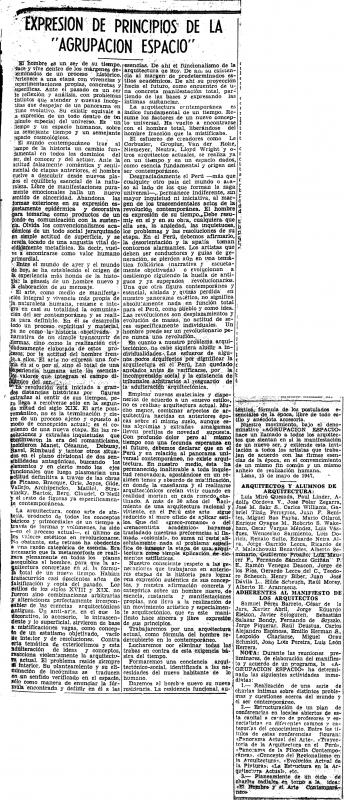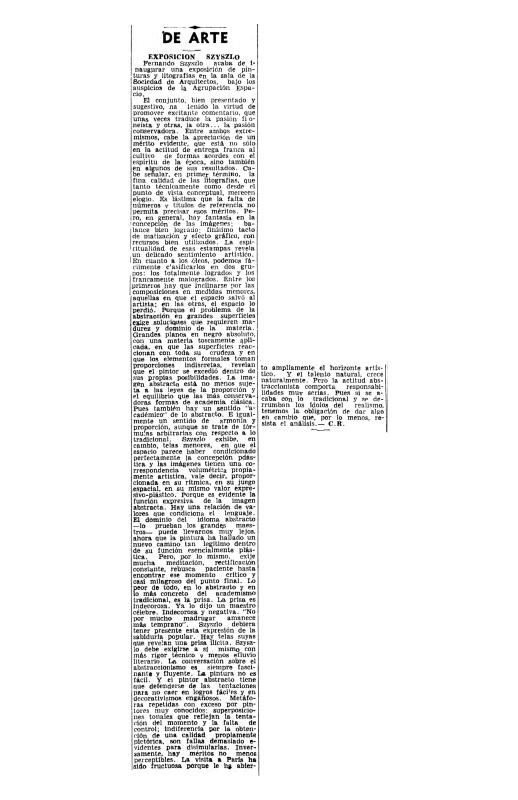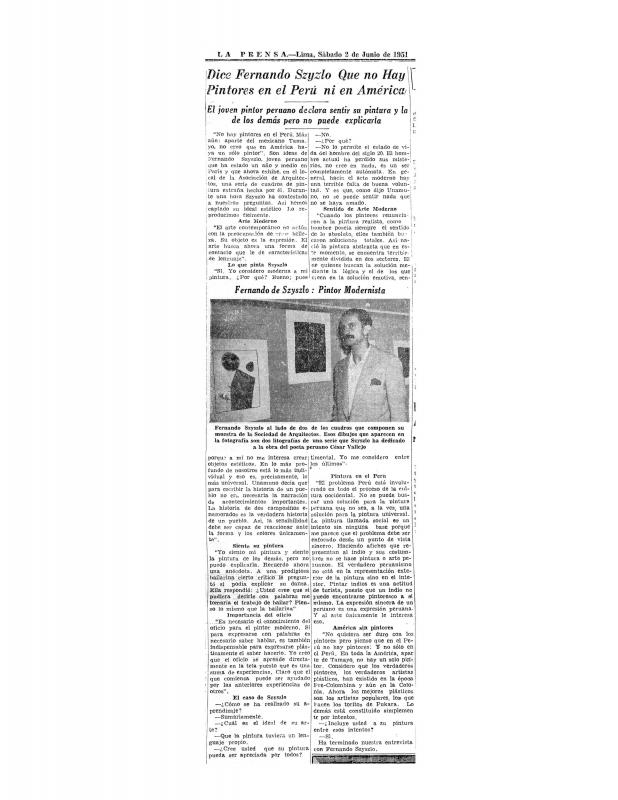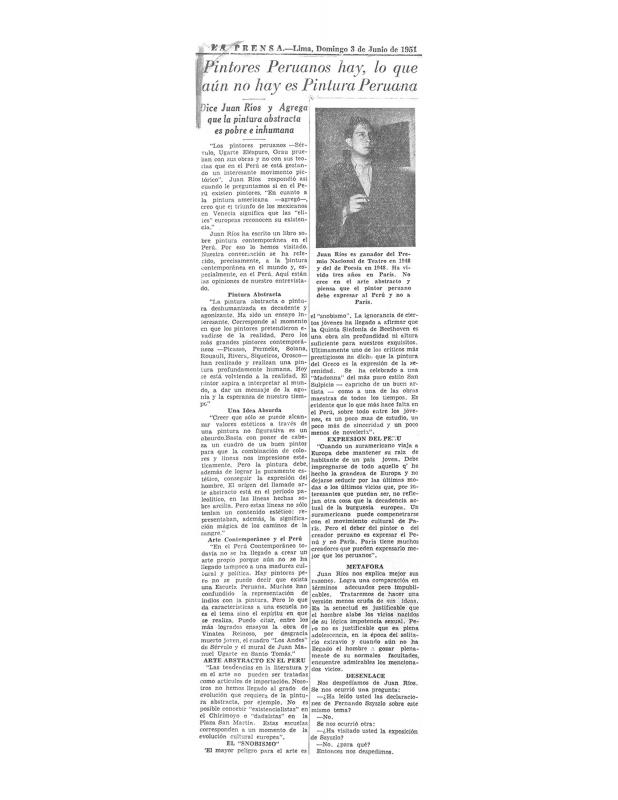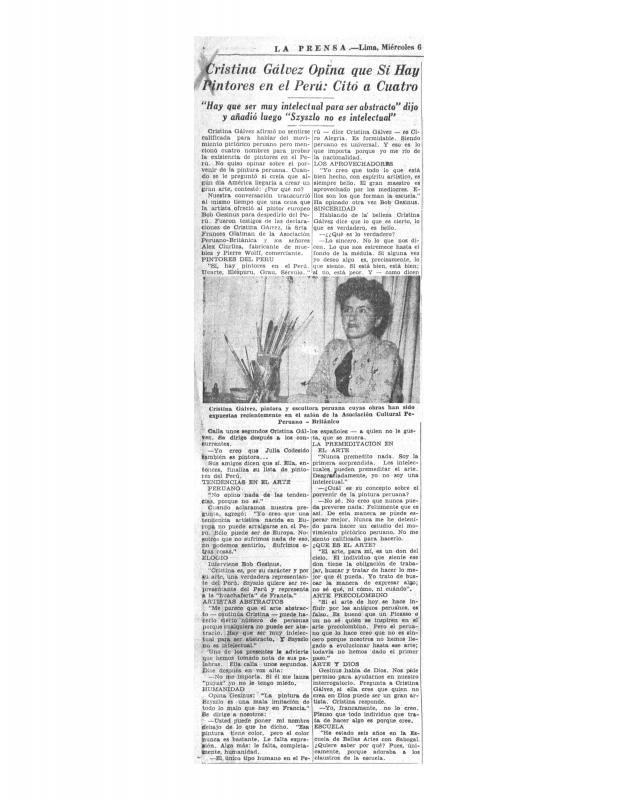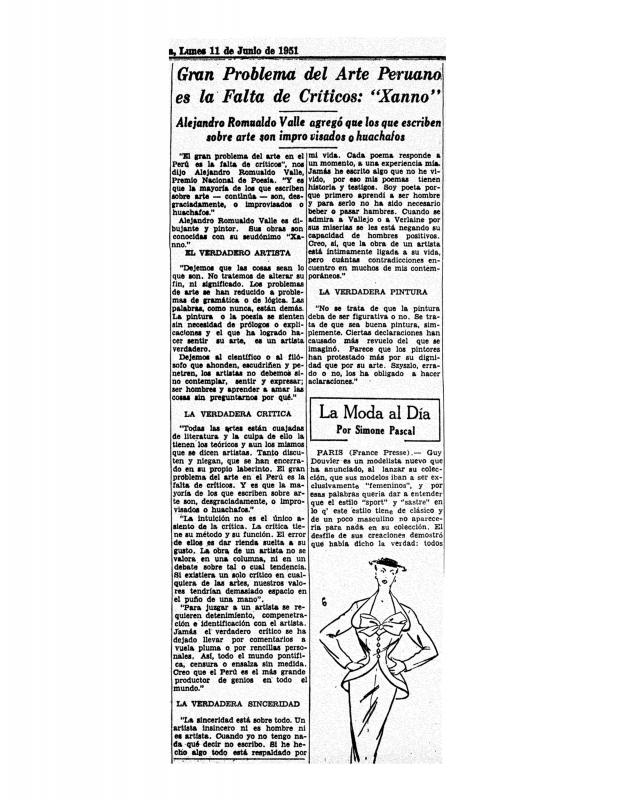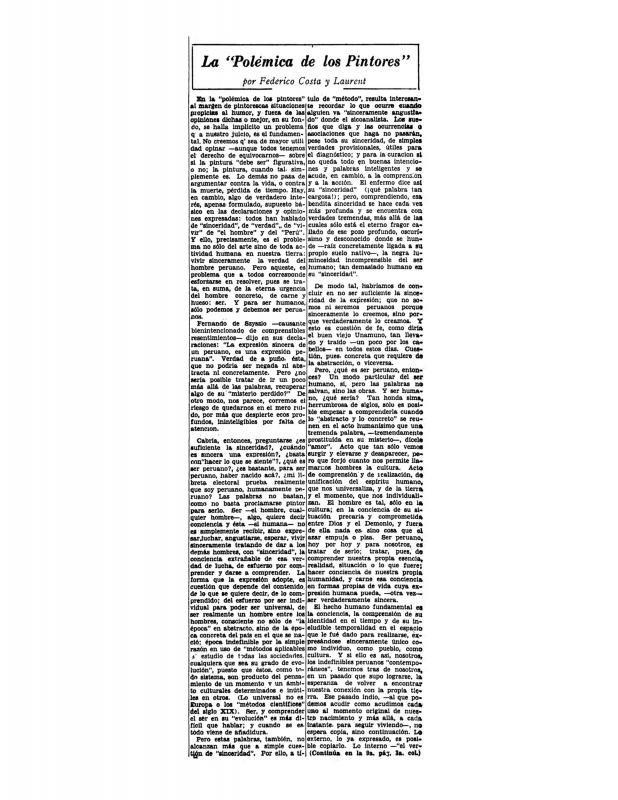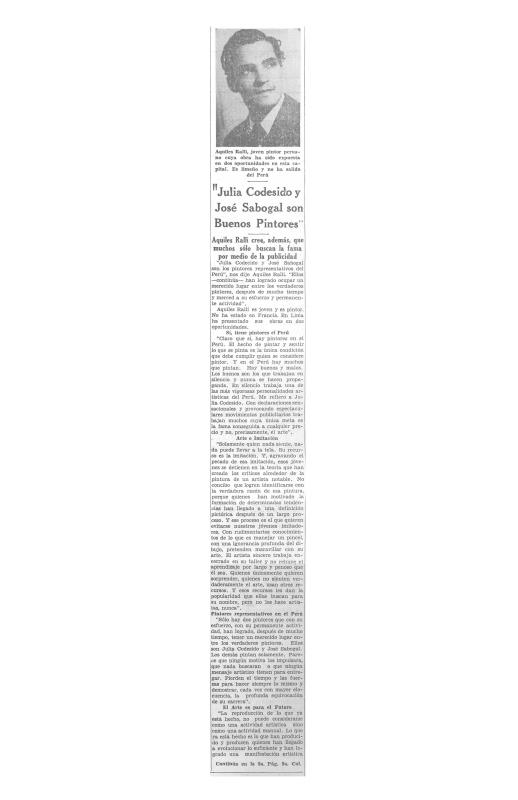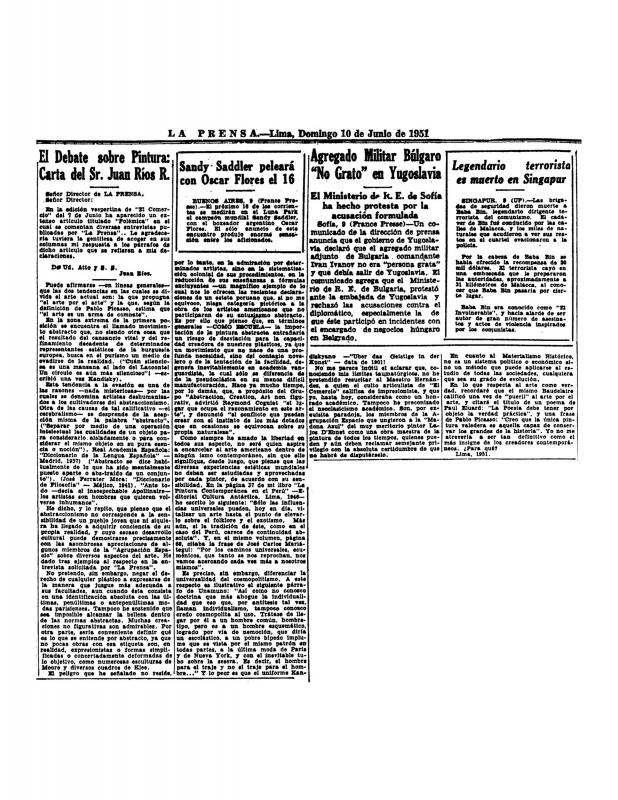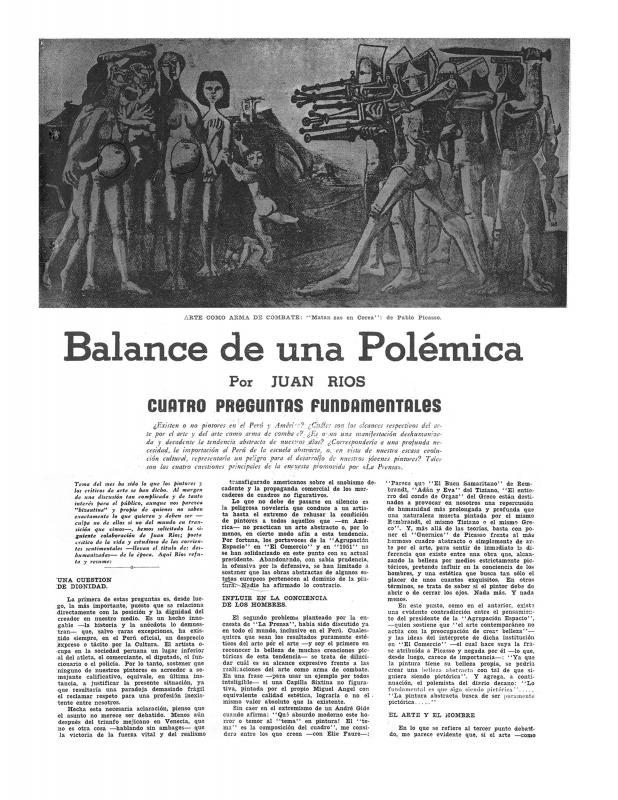This text is the contribution of painter Sérvulo Gutiérrez (1914–61)—who signed his journalist pieces with the name Sérvulo—to the debate unleashed by Fernando de Szyszlo’s polemic statements published in La Prensa newspaper (Lima, June 2, 1951) on the occasion of his show of abstract paintings at the Asociación de Arquitectos del Perú in Lima.
In early 1951, Peruvian painter Fernando de Szyszlo (b. 1925) returned to Lima after having spent almost two years in Paris. His time in the French capital proved decisive to a turn towards Abstract Expressionism in his work, largely due to the influence of German artist Hans Hartung (1904–89). In May 1951, de Szyszlo exhibited his most recent works at the Sociedad de Arquitectos in Lima, in a show held under the auspices of the Agrupación Espacio, a group that spearheaded innovation in art and architecture in the country. [For further reading, see in the ICAA digital archive “Expresión de principios de la Agrupación Espacio” (doc. no. 1126309)].
De Szyszlo’s show was, generally speaking, favorably reviewed, though influential Peruvian critic Carlos Raygada (1898–1953) did have some reservations [see “De arte: exposición Szyszlo” (doc. no. 1150738)]. The overall belligerent tone of de Szyszlo’s rebuttal was overshadowed by his now-famous statement in La Prensa newspaper: “there are no painters in Peru” (doc. no. 1137793). His open contempt for contemporary art from his country gave rise to an irate reaction from Peruvian artists and intellectuals and earned him a leading role in the first debate in Peru on non-figurative art. [For additional information, see the following articles: (unsigned) “Pintores peruanos hay, lo que aún no hay es pintura peruana: dice Juan Ríos y agrega que la pintura abstracta es pobre e inhumana” (doc. no. 1137808); (unsigned) “Cristina Gálvez opina que sí hay pintores en el Perú: citó a cuatro: ‘Hay que ser muy intelectual para ser abstracto’ dijo y añadió luego ‘Szyszlo no es intelectual’” (doc. no. 1150897); (unsigned) “Gran problema del arte peruano es la falta de críticos: ‘Xanno’: Alejandro Romualdo Valle agregó que los que escriben sobre arte son improvisados o huachafos” (doc. no. 1150928); Federico Costa y Laurent’s “La ‘polémica de los pintores’” (doc. no. 1150866); (unsigned) “‘Julia Codesido y Sabogal son buenos pintores’: Aquilles Ralli cree, además, que muchos sólo buscan la fama por medio de la publicidad” (doc. no. 1150882); Juan Ríos’s “El debate sobre pintura: carta del Sr. Juan Ríos R.” (doc. no. 1150912) and “Balance de una polémica: cuatro preguntas fundamentales” (doc. no. 1137882); and Ángel Guido’s “A los pintores peruanos” (doc. no. 1150943)].
Though intentionally provocative, the statement “there are no painters in Peru” made reference to the lack of local points of reference for any artist interested in participating in the most recent international trends. The most ornery issues in the debate were the terms that should be used to define local modern art, suggesting early differences among Peruvian progressive intellectuals. By defending “earthly abstraction” as the sole option for Peruvian art, critic Samuel Pérez Barreto (1921–2003) found himself up against fellow former members of the Agrupación Espacio, a group that vehemently rejected any partisan and totalizing view that identified “the national” with “the Andean.”

